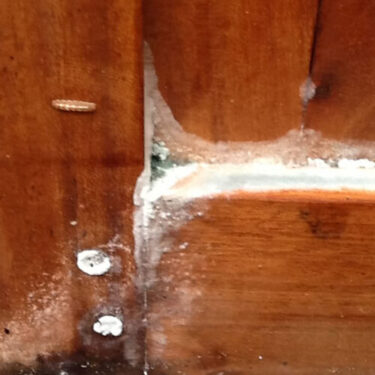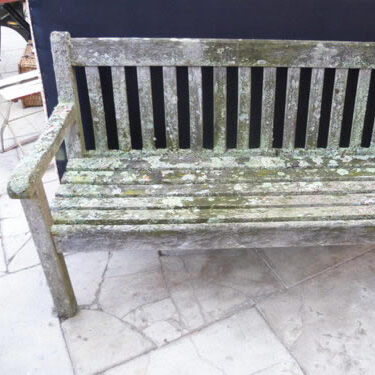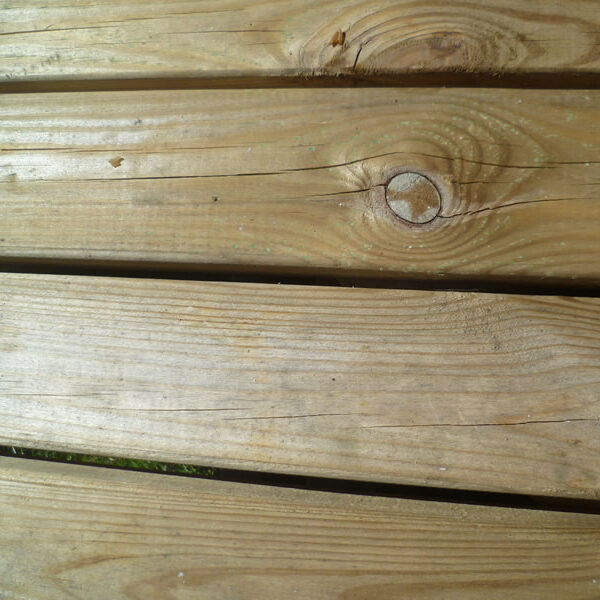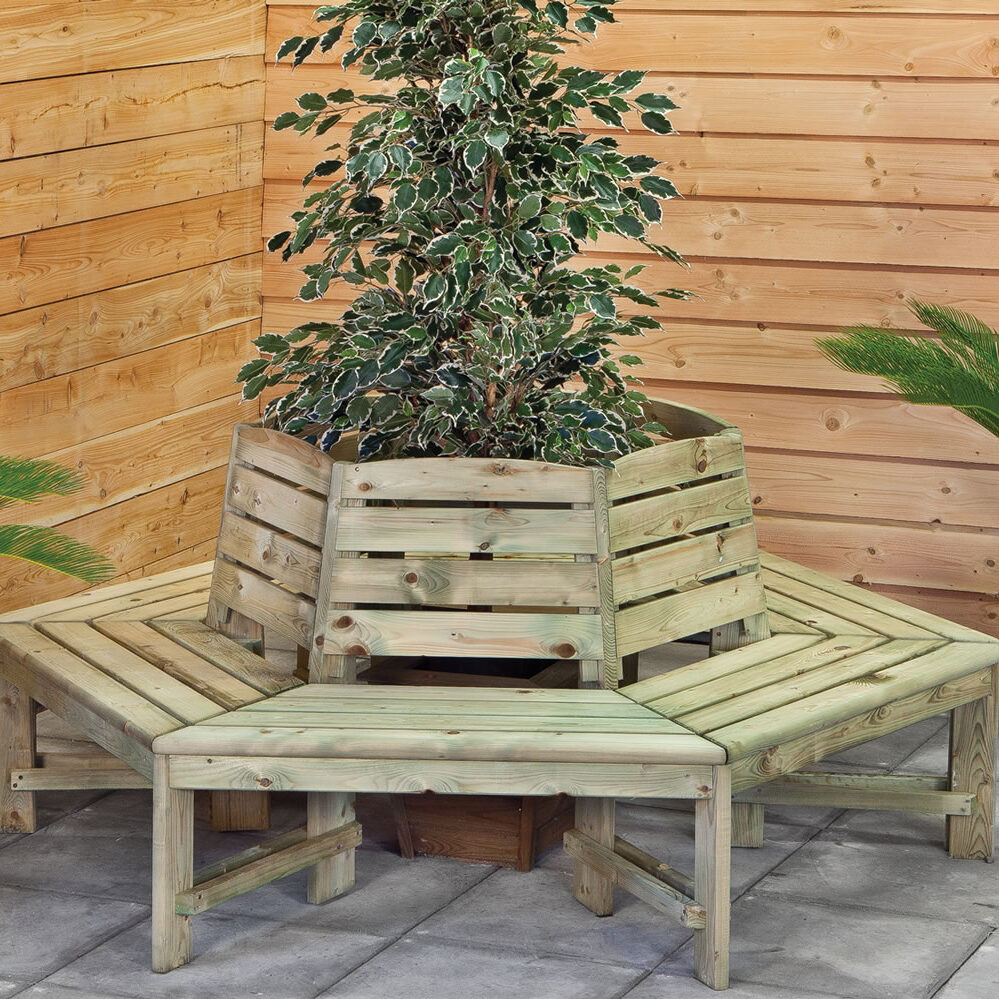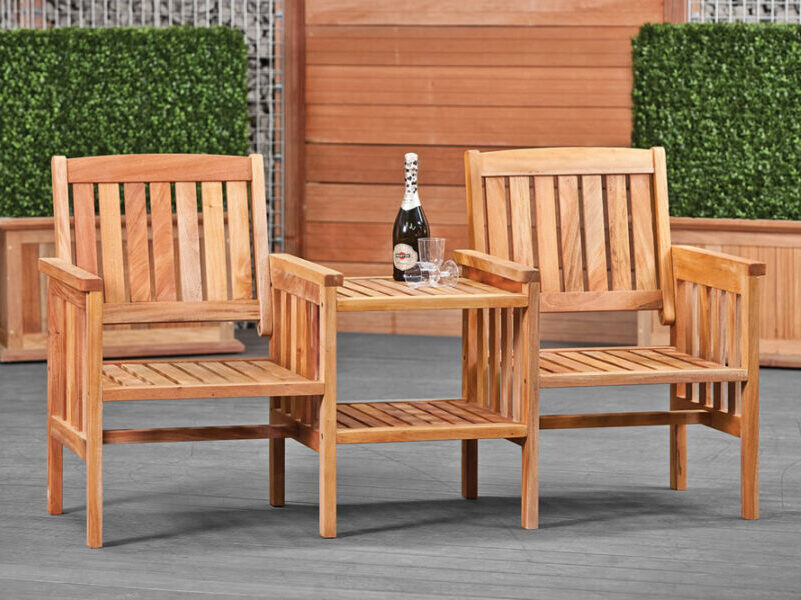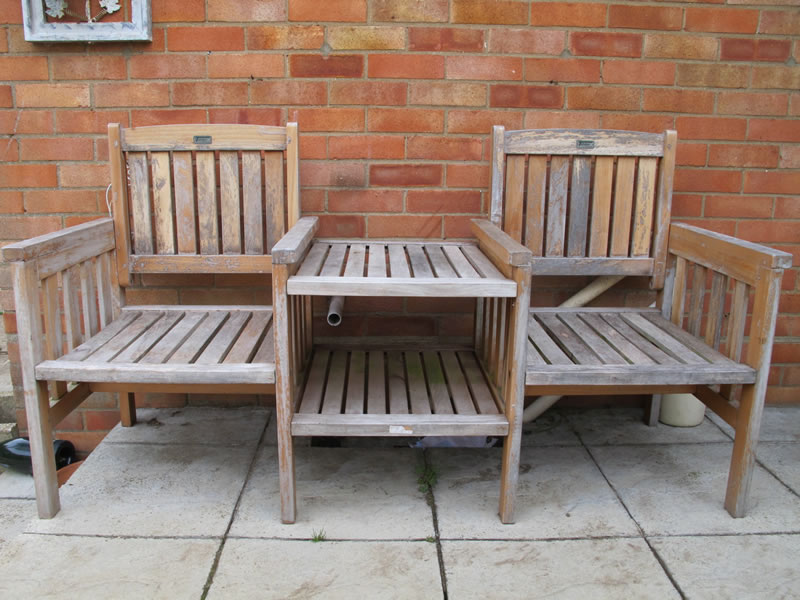Like any outdoor product, Garden Furniture needs looking after and maintained if you want it to last for years. Regardless of the material used: softwood, hardwood, wicker or metal, it still requires regular treatment and regular care.
Weather
The weather of course affects garden furniture, the Autumn and Winter can have some very damaging effects. Likewise the heat of the sun in the hottest months bleaches and dries out wood in any furniture, resulting in loose fittings, bolts, screws etc. This also results in loose joints, so regularly check these. The weather and moisture levels in the air will also affect the timber and you can see splits and cracks appear if not treated correctly.
The weather conditions should be borne in mind and your maintenance adjusted accordingly to the time of year. It’s also a good idea to consider covering furniture during the winter months or moved indoors. Cushions should always be taken undercover when not in use, rarely are garden furniture cushions waterproof.
In the case of wicker furniture during the winter it will become very stiff, likewise in the heat of the sun it will be a little more elastic. Too much moisture can also cause a problem and mildew will build up over time which may cause sagging.
For both hardwood and softwood furniture on going maintenance must be carried out which includes painting and treating softwood and oiling hardwood.
Maintenance Routine
A regular routine should be set up to ensure the Garden Furniture will last for years. This should consist of:
- Cleaning
- Checking Fixtures, Fittings and tightness of joints
- Treatment
Cleaning Garden Furniture
Regular cleaning of your furniture is necessary to prevent mold, fungus or insect attack. General warm soapy water is enough if done regularly. For slightly more dirty furniture such as a Picnic Table you could also use a solution of bleach. You can also mix up your own cleaner with one cup of household ammonia, half a cup of vinegar and four litres of warm water.
Wicker generally needs a wash quite regularly and a soft brush or a vacuum cleaner will also help to remove dirt and dust caught in the complex weave. Check the weave regularly and move any strands back into position if you have noticed they have moved. Do not use foam cleaners on wicker as it gets lodged in-between the weave, ultimately causing damage. It is a good idea not to use wicker furniture that is damp as it may cause sag.
In extreme cases a pressure washer is also very effective in removing damp spores and fungus especially when emerging from the winter and furniture has been left out.
Regular cleaning will stop mold, algae build up and insect attack. These can be particularly dangerous to garden furniture if allowed to build up around and within joints.
It is also completely normal for mildew, algae, fungus and spore to build up on furniture if not cared for.
- Insect attack in a piece of hardwood furniture. This needs immediate and proper cleaning to prevent damage
- Mold and Algae forming on a garden bench
Checking Fixtures and Fittings
With regular use of your furniture it is important to check the fitting and fixtures that make it up. Check these are still tight and keeping joints together. This is particularly important after a few weeks following initial installation. Also make sure you check all bolts in the Spring as the wood tends to dry out and all bolts will become loose possibly creating loose joints.
Like all wood your furniture will expand and contract according to the moisture content in the air and the level of treatment you have applied. In extreme cases without regular treatment and in direct sun all of the time, cracks can appear due to the inherent nature of timber reacting with its environment.
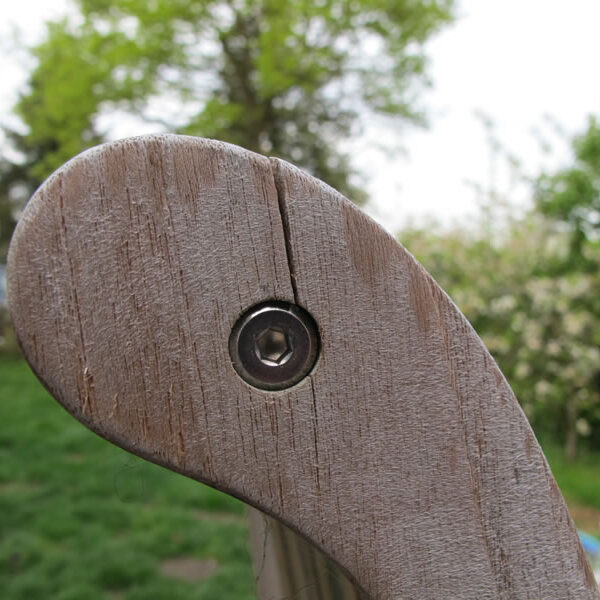
This article explains more about cracks and splits in timber
As well as tightness of all fittings and joints, make sure that all fittings stay in place. Regular use by a busy family develop loose fittings and could see them fall out, losing them.
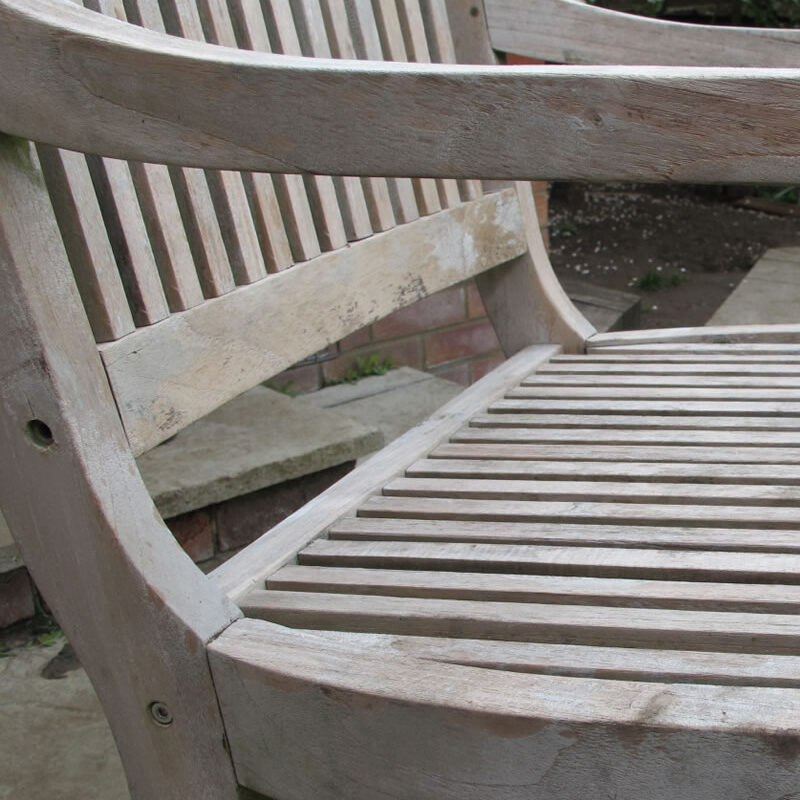
Check your furniture regularly for lost fittings due to becoming loose over time
Loose or missing bolts and fittings will cause the furniture to become unstable and stress the joints which could easily cause breakages or failure of the joints in any furniture.
Treatment of your Furniture
Wicker and metal furniture only needs regular cleaning and checking. For timber garden furniture it is very important that you regularly treat it, providing protection from:
- Weather conditions
- Humidity
- Wood Rot
- Excessive contraction and expansion
- Fungal and insect attack.
Softwood Garden Furniture Treatment
Most outdoor furniture made from softwood such as pine will be pressure treated, this is a rot proof treatment and will guard against the timber rotting, more details on this process can be found here: Pressure Treatment of Timber
Regardless of pressure treatment it is a very good idea to regularly treat the timber as you would a Shed or Log Cabin. Proper treatment will help to stop the wood develop cracks or joints becoming loose, it will inhibit it’s natural tendency to warp. It will also greatly increase the longevity and enjoyment of the Garden Furniture
- Pressure treated picnic table surface. This would benefit from a good timber treatment.
Hardwood Garden Furniture Treatment
Hardwood is a good choice for furniture as it contains natural oils that resist rot. However, it does still need caring for as it shares the same properties as all other types of wood and is susceptible to cracking, splitting, shrinkage and expansion which will all affect the longevity of your furniture.
If left hardwood weathers to a silvery grey, depending on the location and the amount of exposure to the sun this can be as short as one month up to a year.
Please see this example, this is a friend of mine’s hardwood love seat. The first picture is the as new finish.
This seat is now about two years old:
Notice how much it has weathered and most of it is starting to turn a silvery colour. Also notice some mildew / mold / spores on the rear slats forming, this is completely normal in an uncared for piece of hardwood garden furniture.
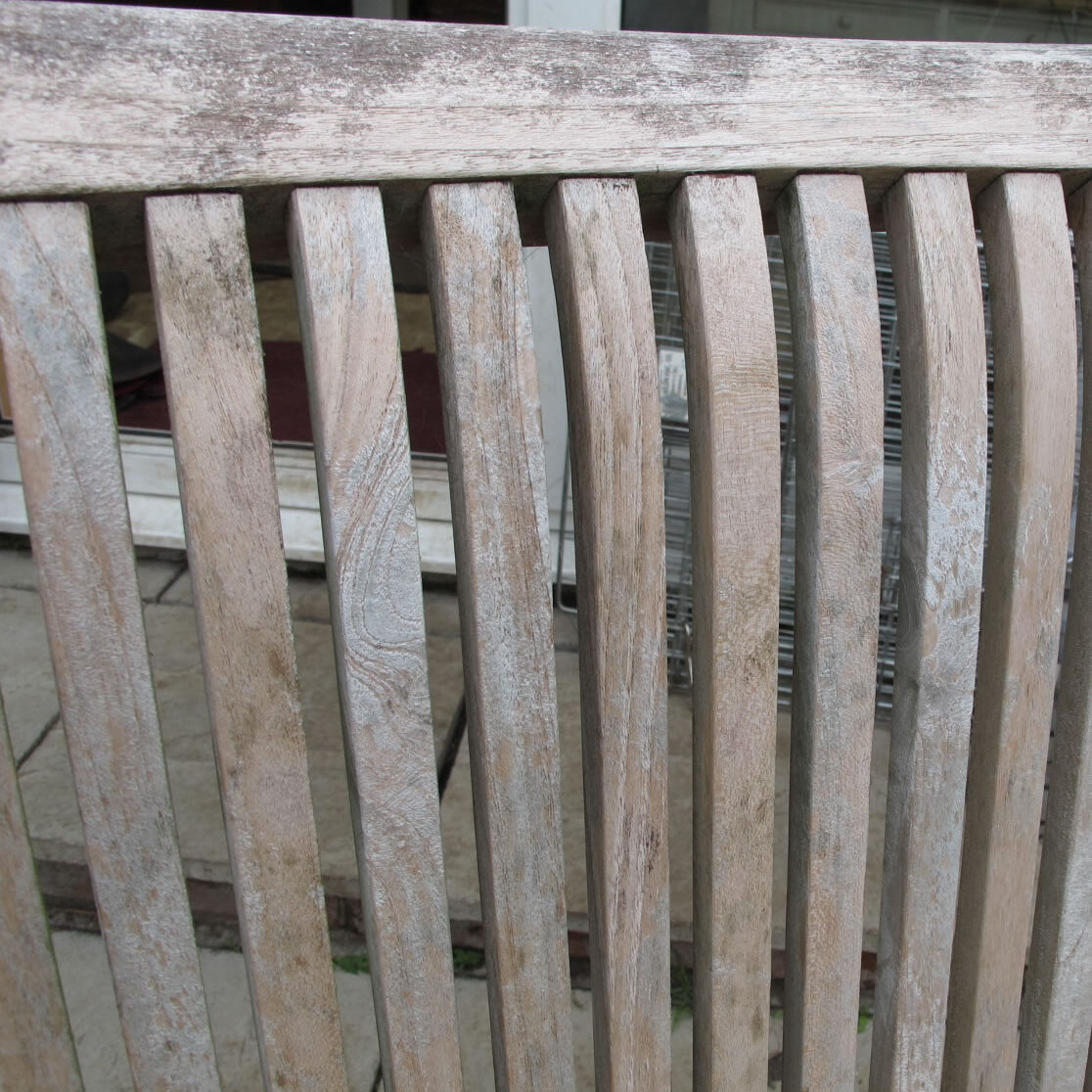
Weathered to a silvery colour – another example of an uncared for piece of hardwood furniture. The deep rich colour has weathered to a silvery grey. Notice though large deposits of ingrained dirt or spores.
There are many treatments for hardwood on the market, most of them will be hardwood sealants or oils. In order to look after your furniture it is a good idea to start oiling it within 2 weeks of assembling it and then to keep up the routine every month or so, this will then help to keep the deep rich colour. It will also of course nourish the hardwood thereby extending its life.
You normally apply oil with a brush in the direction of the grain, aerosols are also available. We have a selection of hardwood treatments in our timber treatment category
Restoring Hardwood Garden Furniture
Restoring a neglected piece of furniture is a straightforward process and start with cleaning, sanding, and re-oiling. I will write a piece on this shortly using the love seat above as an example as I restore it to its former glory.
Here’s an impressive example of restoration:
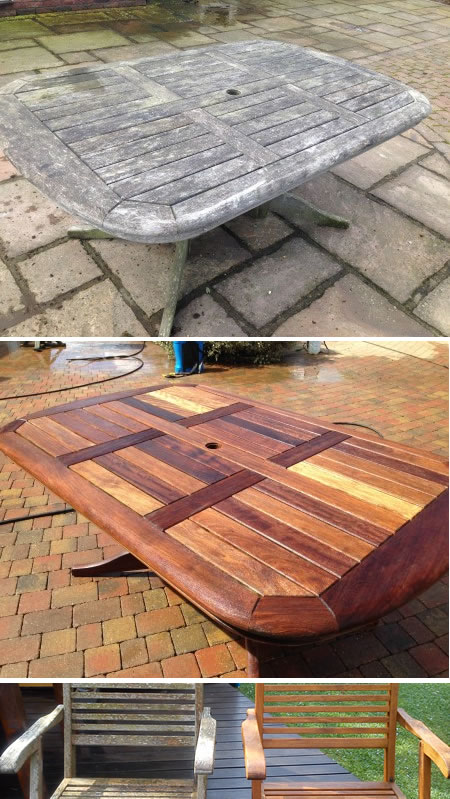
Restoration of a hardwood table and chairs
Summary on caring for your Garden Furniture
Garden furniture can be very expensive. So, to ensure longevity, please take time to regularly look after it with treatment, care and regular inspections

Care of garden furniture is very important to increase its longevity. This is a very neglected swing bench . You cannot expect the same life from it as you would if cared for correctly.






